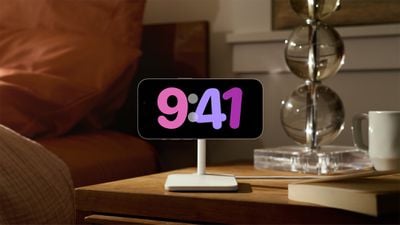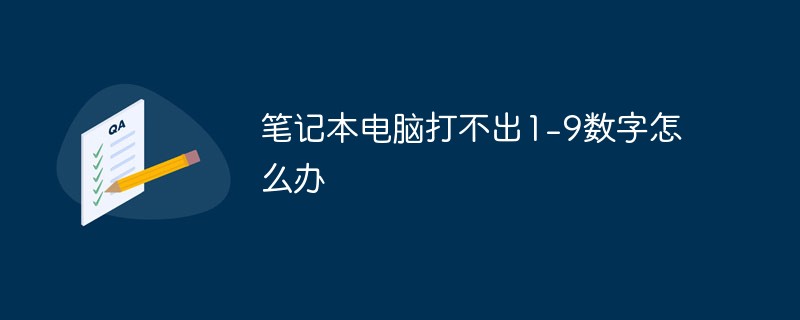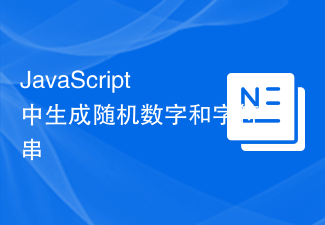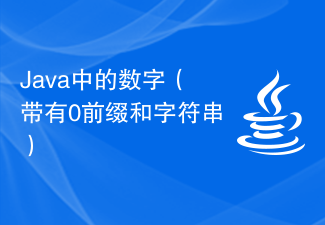 Backend Development
Backend Development C#.Net Tutorial
C#.Net Tutorial Implement a verification code generation class (including numbers, pinyin, and Chinese characters)
Implement a verification code generation class (including numbers, pinyin, and Chinese characters)This article shares with you a verification code generation class that integrates 1: lowercase Pinyin; 2: uppercase Pinyin; 3: numbers; 4: Chinese characters. The examples in this chapter will also include a scenario where mvc uses verification code verification. It has a certain reference value. Let’s take a look at it with the editor.
What I’m sharing with you this time is a verification code generation class that integrates 1: Lowercase Pinyin 2: Uppercase Pinyin 3: Numbers 4: Chinese characters. Judging from the title, it looks very ordinary. Yes, it is very ordinary. However, when generating this verification code class, you can specify the rules of the verification code return format through parameters. More importantly, I hope it can bring some practicality to everyone. The examples in this chapter will also include a scenario where MVC uses verification code for verification. I hope you will like it.
» Verification code generation flow chart
» Analysis of verification code generation pool code
» Verification Draw the code on the picture
» mvc login operation to test the correctness of the verification code
The following will be shared step by step:
» Verification code generation flow chart
First of all, let’s take a look at the generation flow chart of the verification code generation class shared this time:

You can see that the encoding generation pool described in this picture corresponds to several different encoding contents. Here, different encoding contents are allowed to be obtained at the same time according to the parameter settings, so as to reach the verification code that is combined with text, pinyin, and Chinese characters. SpecificallyRule settingsDepends on parameters;
» Analysis of verification code generation pool code
First of all, it can be seen from the analysis of the flow chart above, This verification code generation pool needs to obtain different types of verification code data in parallel to meet the combined verification code, so the following code is available:
/// <summary>
/// 创建验证码
/// </summary>
/// <param name="codeType">1:小写拼音 2:大写拼音 3:数字 4:汉字</param>
/// <returns></returns>
public static string CreateCode(string codeType = "1|2|3|4")
{
var code = string.Empty;
try
{
if (string.IsNullOrWhiteSpace(codeType) || codeType.IndexOf('|') < 0) { codeType = "1|2|3|4"; }
var codeTypeArr = codeType.Split(new char[] { '|' }, StringSplitOptions.RemoveEmptyEntries);
var strLen = codeTypeArr.Length;
//任务
Task<string>[] taskArr = new Task<string>[strLen];
for (int i = 0; i < strLen; i++)
{
var val = codeTypeArr[i];
switch (val)
{
case "1": //小写拼音
taskArr[i] = Task.Factory.StartNew<string>(() => { return GetPinYinOrUpper(false); });
break;
case "2": //大写拼音
taskArr[i] = Task.Factory.StartNew<string>(() => { return GetPinYinOrUpper(); });
break;
case "3": //数字
taskArr[i] = Task.Factory.StartNew<string>(() => { return GetShuZi(); });
break;
case "4": //汉字
taskArr[i] = Task.Factory.StartNew<string>(() => { return GetHanZi(); });
break;
default:
break;
}
}
//等待完成 30s
Task.WaitAll(taskArr, TimeSpan.FromSeconds(30));
foreach (var item in taskArr)
{
code += item.Result;
}
}
catch (Exception ex)
{
code = "我爱祖国";
}
return code;
}The keywords continue to be used here Task, to distribute tasks to obtain different verification code contents. Personally, I think the most important thing is to determine the verification code through parameter setting string codeType = "1|2|3|4" The combination method also achieves the diversity of verification code format;
» Draw the verification code on the picture
First of all, what we need to make clear is that If you want to draw text on a picture, you need to use the Graphics keyword to create a canvas and draw our verification code on the picture. Here is the code:
/// <summary>
/// 生成验证码图片流
/// </summary>
/// <param name="code">验证码文字</param>
/// <returns>流</returns>
public static byte[] CreateValidateCodeStream(string code = "我爱祖国", int fontSize = 18, int width = 0, int height = 0, string fontFamily = "华文楷体")
{
var bb = new byte[0];
//初始化画布
var padding = 2;
var len = code.Length;
width = width <= 0 ? fontSize * 2 * (len - 1) + padding * 4 : width;
height = height <= 0 ? fontSize * 2 : height;
var image = new Bitmap(width, height);
var g = Graphics.FromImage(image);
try
{
var random = new Random();
//清空背景色
g.Clear(Color.White);
//画横向中间干扰线
var x1 = 0;
var y1 = height / 2;
var x2 = width;
var y2 = y1;
g.DrawLine(new Pen(Color.DarkRed), x1, y1, x2, y2);
//字体
var font = new Font(fontFamily, fontSize, (FontStyle.Bold | FontStyle.Italic));
var brush = new LinearGradientBrush(new Rectangle(0, 0, image.Width, image.Height),
Color.Blue, Color.DarkRed, 1f, true);
//画文字
var stringFomart = new StringFormat();
//垂直居中
stringFomart.LineAlignment = StringAlignment.Center;
//水平居中
stringFomart.Alignment = StringAlignment.Center;
var rf = new Rectangle(Point.Empty, new Size(width, height));
g.DrawString(code, font, brush, rf, stringFomart);
//画图片的前景干扰点
for (int i = 0; i < 100; i++)
{
var x = random.Next(image.Width);
var y = random.Next(image.Height);
image.SetPixel(x, y, Color.FromArgb(random.Next()));
}
//画图片的边框线
g.DrawRectangle(new Pen(Color.Silver), 0, 0, image.Width - 1, image.Height - 1);
//保存图片流
var stream = new MemoryStream();
image.Save(stream, ImageFormat.Jpeg);
//输出图片流
bb = stream.ToArray();
}
catch (Exception ex) { }
finally
{
g.Dispose();
image.Dispose();
}
return bb;
}This lists the key points of the method of drawing verification code pictures:
1. The height and width of the picture need to be set. This depends on different page layout methods, so here it is Height and width are used as parameters to pass
2. Interference lines: Usually verification code pictures have one or two interference lines, mainly to prevent some malicious users from using image recognition software to make irregular cracking requests. Here are the interference lines The code for setting only a horizontally centered straight line is as follows: g.DrawLine(new Pen(Color.DarkRed), x1, y1, x2, y2);
3. Font: A good-looking font is usually also a kind of user experience, so the font is passed here according to the required parameters;
4. The verification code is located in the vertical and horizontal center of the image. The key code here is:
var stringFomart = new StringFormat(); //垂直居中 stringFomart.LineAlignment = StringAlignment.Center; //水平居中 stringFomart.Alignment = StringAlignment.Center;
5. g.DrawString(code, font, brush, rf, stringFomart); is mainly used to draw text onto pictures. This is the most critical point
6. We usually turn the verification code into a picture stream instead of actually generating an entity verification code picture and saving it to the server, otherwise the server will soon The disk is insufficient, so the importance of
//保存图片流 var stream = new MemoryStream(); image.Save(stream, ImageFormat.Jpeg); //输出图片流 bb = stream.ToArray();
cannot be ignored. The main thing is to save the content of the painting to the stream for easy use
7. Finally Don’t forget to use Dispose to release the canvas
» mvc login operation to test the correctness of the verification code
With the verification code image generated by the verification code generation class above, Then we still need to test and verify the correctness and effect; below we use the mvc architecture for testing, first create a verification code test Action and generate the corresponding ValidCode.cshtml file, and then customize several verification codes in different formats to obtain the Action. The code is as follows:
public FileResult GetValidateCode()
{
//返回的验证码文字
var code = string.Empty;
var bb_code = ValidateCode.GetValidateCodeStream(ref code);
return File(bb_code, "image/jpeg");
}
public FileResult GetValidateCode01()
{
var code = string.Empty;
var bb_code = ValidateCode.GetValidateCodeStream(ref code, "1|2|3|4");
return File(bb_code, "image/jpeg");
}
public FileResult GetValidateCode02()
{
var code = string.Empty;
var bb_code = ValidateCode.GetValidateCodeStream(ref code, "4|3|2|1");
return File(bb_code, "image/jpeg");
}
public FileResult GetValidateCode03()
{
var code = string.Empty;
var bb_code = ValidateCode.GetValidateCodeStream(ref code, "2|2|2|2");
return File(bb_code, "image/jpeg");
}
public FileResult GetValidateCode04()
{
var code = string.Empty;
var bb_code = ValidateCode.GetValidateCodeStream(ref code, "4|4|4|4");
return File(bb_code, "image/jpeg");
}
public FileResult GetValidateCode05()
{
var code = string.Empty;
var bb_code = ValidateCode.GetValidateCodeStream(ref code, "1|1|1|1");
return File(bb_code, "image/jpeg");
}It feels almost exactly the same, except that the corresponding parameters are different. The method followed here is the GetValidateCodeStream parameter codeType format: empty means free combination 1: lowercase pinyin 2: Uppercase Pinyin 3: Numbers 4: Chinese characters; then we fill in the following code in the diagram:
<h2 id="神牛-nbsp-nbsp-验证码实例">神牛 - 验证码实例</h2> <p class="container " id="appVue"> <table class="table table-bordered text-left"> <tbody> <tr> <td>全部随机</td> <td> <img src="/static/imghwm/default1.png" data-src="/home/GetValidateCode" class="lazy" id="imgCode" / alt="Implement a verification code generation class (including numbers, pinyin, and Chinese characters)" > <input type="text" name="code" placeholder="请输入验证码" class="form-control" /> <button class="btn btn-default">登 录</button> <span id="msg" style="color:red"></span> </td> </tr> <tr> <td>小写|大写|数字|汉字</td> <td><img src="/static/imghwm/default1.png" data-src="/home/GetValidateCode01" class="lazy" / alt="Implement a verification code generation class (including numbers, pinyin, and Chinese characters)" ></td> </tr> <tr> <td>汉字|数字|大写|小写</td> <td><img src="/static/imghwm/default1.png" data-src="/home/GetValidateCode02" class="lazy" / alt="Implement a verification code generation class (including numbers, pinyin, and Chinese characters)" ></td> </tr> <tr> <td>全部大写</td> <td><img src="/static/imghwm/default1.png" data-src="/home/GetValidateCode03" class="lazy" / alt="Implement a verification code generation class (including numbers, pinyin, and Chinese characters)" ></td> </tr> <tr> <td>全部汉字</td> <td><img src="/static/imghwm/default1.png" data-src="/home/GetValidateCode04" class="lazy" / alt="Implement a verification code generation class (including numbers, pinyin, and Chinese characters)" ></td> </tr> <tr> <td>全部小写</td> <td><img src="/static/imghwm/default1.png" data-src="/home/GetValidateCode05" class="lazy" / alt="Implement a verification code generation class (including numbers, pinyin, and Chinese characters)" ></td> </tr> </tbody> </table> </p>
Okay, let’s generate the project, look at the renderings as follows:

能从图中看到我们验证码格式的不同之处,这也是文章开头说的验证码格式的多样性,当然可能还有其他组成格式请允许我暂时忽略,下面我们来做一个点击图片获取新验证码的功能和点击登录按钮去后台程序判断验证码是否匹配的例子,先来修改试图界面代码如下:
@{
ViewBag.Title = "ValidtCode";
}
<h2 id="神牛-nbsp-nbsp-验证码实例">神牛 - 验证码实例</h2>
<p class="container " id="appVue">
<table class="table table-bordered text-left">
<tbody>
<tr>
<td>全部随机</td>
<td>
<img src="/static/imghwm/default1.png" data-src="/home/GetValidateCode" class="lazy" id="imgCode" / alt="Implement a verification code generation class (including numbers, pinyin, and Chinese characters)" >
<input type="text" name="code" placeholder="请输入验证码" class="form-control" />
<button class="btn btn-default">登 录</button>
<span id="msg" style="color:red"></span>
</td>
</tr>
<tr>
<td>小写|大写|数字|汉字</td>
<td><img src="/static/imghwm/default1.png" data-src="/home/GetValidateCode01" class="lazy" / alt="Implement a verification code generation class (including numbers, pinyin, and Chinese characters)" ></td>
</tr>
<tr>
<td>汉字|数字|大写|小写</td>
<td><img src="/static/imghwm/default1.png" data-src="/home/GetValidateCode02" class="lazy" / alt="Implement a verification code generation class (including numbers, pinyin, and Chinese characters)" ></td>
</tr>
<tr>
<td>全部大写</td>
<td><img src="/static/imghwm/default1.png" data-src="/home/GetValidateCode03" class="lazy" / alt="Implement a verification code generation class (including numbers, pinyin, and Chinese characters)" ></td>
</tr>
<tr>
<td>全部汉字</td>
<td><img src="/static/imghwm/default1.png" data-src="/home/GetValidateCode04" class="lazy" / alt="Implement a verification code generation class (including numbers, pinyin, and Chinese characters)" ></td>
</tr>
<tr>
<td>全部小写</td>
<td><img src="/static/imghwm/default1.png" data-src="/home/GetValidateCode05" class="lazy" / alt="Implement a verification code generation class (including numbers, pinyin, and Chinese characters)" ></td>
</tr>
</tbody>
</table>
</p>
然后在Controller中增加如下登录验证代码:
public JsonResult UserLogin(string code)
{
var data = new Stage.Com.Extend.StageModel.MoData();
if (string.IsNullOrWhiteSpace(code)) { data.Msg = "验证码不能为空"; return Json(data); }
var compareCode = Session["code"];
if (!compareCode.Equals(code)) { data.Msg = "验证码错误"; return Json(data); }
data.IsOk = true;
data.Msg = "验证码验证成功";
return Json(data);
}
public FileResult GetValidateCode()
{
//返回的验证码文字
var code = string.Empty;
var bb_code = ValidateCode.GetValidateCodeStream(ref code);
var key = "code";
if (Session[key] != null)
{
Session.Remove(key);
}
Session[key] = code;
return File(bb_code, "image/jpeg");
}由于我这里无法截动态图,所点击测试获取验证码我这里直接给出线上的一个例子,各位可以试试:http://lovexins.com:1001/home/ValidCode,点击获取新验证码的关键代码是: $(this).attr("src", src); 重新给img元素的scr赋值,不过这里要注意由于浏览器缓存的原因,这里赋值的时候需要加上一个动态参数,我这里是使用时间作为请求参数,因此有了以下的代码: $(this).attr("src") + "?t=" + nowTime; 这是特别的地方需要注意;好了咋们来直接测试登陆是否能从后端判断验证码是否正确匹配吧,这里用的是session来保存获取验证码图片返回的验证代码,然后在登陆时候判断用户数据的验证码是否和后台session的验证一样:
验证失败:

验证成功:

好了测试用例就这么多,如果您觉得我这个验证码生成例子还可以并且您希望使用那么请注意,参数的传递,不同得到的验证码格式不同,主要方法是:
/// <summary>
/// 获取验证码图片流
/// </summary>
/// <param name="codeLen">验证码个数(codeType设置 > codeLen设置)</param>
/// <param name="codeType">为空表示自由组合 1:小写拼音 2:大写拼音 3:数字 4:汉字</param>
/// <returns></returns>
public static byte[] GetValidateCodeStream(ref string code, string codeType = "", int codeLen = 0, int fontSize = 18, int width = 120, int height = 30)
{
//为空自由组合
if (string.IsNullOrWhiteSpace(codeType))
{
for (int i = 0; i < codeLen; i++)
{
codeType += rm.Next(1, 5) + "|";
}
}
code = CreateCode(codeType);
return CreateValidateCodeStream(code, fontSize, width: width, height: height);
}具体参数各位可以看下备注,我这里顺便打包下代码,方便分享和使用:验证码生成示例
The above is the detailed content of Implement a verification code generation class (including numbers, pinyin, and Chinese characters). For more information, please follow other related articles on the PHP Chinese website!
 php怎么将16进制字符串转为数字Oct 26, 2021 pm 06:36 PM
php怎么将16进制字符串转为数字Oct 26, 2021 pm 06:36 PMphp将16进制字符串转为数字的方法:1、使用hexdec()函数,语法“hexdec(十六进制字符串)”;2、使用base_convert()函数,语法“bindec(十六进制字符串, 16, 10)”。
 iOS 17:如何在待机模式下更改iPhone时钟样式Sep 10, 2023 pm 09:21 PM
iOS 17:如何在待机模式下更改iPhone时钟样式Sep 10, 2023 pm 09:21 PM待机是一种锁定屏幕模式,当iPhone插入充电器并以水平(或横向)方向定位时激活。它由三个不同的屏幕组成,其中一个是全屏时间显示。继续阅读以了解如何更改时钟的样式。StandBy的第三个屏幕显示各种主题的时间和日期,您可以垂直滑动。某些主题还会显示其他信息,例如温度或下一个闹钟。如果您按住任何时钟,则可以在不同的主题之间切换,包括数字、模拟、世界、太阳能和浮动。Float以可自定义的颜色以大气泡数字显示时间,Solar具有更多标准字体,具有不同颜色的太阳耀斑设计,而World则通过突出显示世界地
 笔记本电脑打不出1-9数字怎么办Feb 23, 2023 pm 05:19 PM
笔记本电脑打不出1-9数字怎么办Feb 23, 2023 pm 05:19 PM笔记本电脑打不出1-9数字是设置问题导致的,其解决办法:1、按下“win+r”打开运行输入cmd并回车;2、在命令提示符界面,输入osk并回车;3、点击虚拟键盘上的“选项”,并勾选“打开数字小键盘”;4、启动“numlock键”即可。
 JavaScript中生成随机数字和字符串Sep 02, 2023 am 08:57 AM
JavaScript中生成随机数字和字符串Sep 02, 2023 am 08:57 AM生成随机数或字母数字字符串的能力在许多情况下都会派上用场。您可以使用它在游戏中的不同位置生成敌人或食物。您还可以使用它向用户建议随机密码或创建文件名来保存文件。我写了一篇关于如何在PHP中生成随机字母数字字符串的教程。我在这篇文章的开头说,几乎没有事件是真正随机的,同样的情况也适用于随机数或字符串生成。在本教程中,我将向您展示如何在JavaScript中生成伪随机字母数字字符串。在JavaScript中生成随机数让我们从生成随机数开始。我想到的第一个方法是Math.random(),它返回一个浮
 C++程序将一个数字四舍五入到n位小数Sep 12, 2023 pm 05:13 PM
C++程序将一个数字四舍五入到n位小数Sep 12, 2023 pm 05:13 PM在任何语言中编写程序时,将数字表示为输出是一项有趣且重要的任务。对于整数类型(short、long或medium类型的数据),很容易将数字表示为输出。对于浮点数(float或double类型),有时我们需要将其四舍五入到特定的小数位数。例如,如果我们想将52.24568表示为三位小数,需要进行一些预处理。在本文中,我们将介绍几种技术,通过四舍五入将浮点数表示为特定的小数位数。在不同的方法中,使用类似C的格式化字符串、使用精度参数以及使用数学库中的round()函数是很重要的。让我们逐个来看。带有
 使用C++编写代码,找到第N个非平方数Aug 30, 2023 pm 10:41 PM
使用C++编写代码,找到第N个非平方数Aug 30, 2023 pm 10:41 PM我们都知道不是任何数字的平方的数字,如2、3、5、7、8等。非平方数有N个,不可能知道每个数字。因此,在本文中,我们将解释有关无平方数或非平方数的所有内容,以及在C++中查找第N个非平方数的方法。第N个非平方数如果一个数是整数的平方,则该数被称为完全平方数。完全平方数的一些例子是-1issquareof14issquareof29issquareof316issquareof425issquareof5如果一个数不是任何整数的平方,则该数被称为非平方数。例如,前15个非平方数是-2,3,5,6,
 Java中的数字(带有0前缀和字符串)Aug 29, 2023 pm 01:45 PM
Java中的数字(带有0前缀和字符串)Aug 29, 2023 pm 01:45 PMJava中的数字重要的是要理解数字类不是一个有形的类,而是一个抽象的类。在它内部,我们有一组定义其功能的包装类。这些包装类包括Integer、Byte、Double、Short、Float和Long。您可能会注意到,这些与我们之前讨论的基本数据类型相同,但它们表示为具有大写名称的单独类,以符合类命名约定。根据特定函数或程序范围的要求,编译器自动将原始数据类型转换为对象,反之亦然,并且数字类是java.lang包的一部分。此过程称为自动装箱和拆箱。通过掌握数字类及其对应的包装类的抽象性质,我们可以
 在PHP中使用is_numeric()函数检查是否为数字Jun 27, 2023 pm 05:00 PM
在PHP中使用is_numeric()函数检查是否为数字Jun 27, 2023 pm 05:00 PM在PHP编程语言中,is_numeric()函数是一种非常常用的函数,用于判断一个变量或值是否为数字。在实际编程中,经常需要对用户输入的数值进行验证,判断其是否为数字类型,这时就可以使用is_numeric()函数进行判断。一、is_numeric()函数简介is_numeric()函数是一个用于检测变量或值是否为数字的函数。如果变量或值为数字,则返回tru


Hot AI Tools

Undresser.AI Undress
AI-powered app for creating realistic nude photos

AI Clothes Remover
Online AI tool for removing clothes from photos.

Undress AI Tool
Undress images for free

Clothoff.io
AI clothes remover

AI Hentai Generator
Generate AI Hentai for free.

Hot Article

Hot Tools

SublimeText3 Mac version
God-level code editing software (SublimeText3)

SAP NetWeaver Server Adapter for Eclipse
Integrate Eclipse with SAP NetWeaver application server.

Atom editor mac version download
The most popular open source editor

mPDF
mPDF is a PHP library that can generate PDF files from UTF-8 encoded HTML. The original author, Ian Back, wrote mPDF to output PDF files "on the fly" from his website and handle different languages. It is slower than original scripts like HTML2FPDF and produces larger files when using Unicode fonts, but supports CSS styles etc. and has a lot of enhancements. Supports almost all languages, including RTL (Arabic and Hebrew) and CJK (Chinese, Japanese and Korean). Supports nested block-level elements (such as P, DIV),

SecLists
SecLists is the ultimate security tester's companion. It is a collection of various types of lists that are frequently used during security assessments, all in one place. SecLists helps make security testing more efficient and productive by conveniently providing all the lists a security tester might need. List types include usernames, passwords, URLs, fuzzing payloads, sensitive data patterns, web shells, and more. The tester can simply pull this repository onto a new test machine and he will have access to every type of list he needs.






